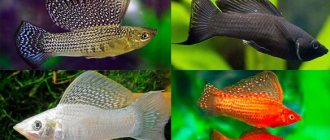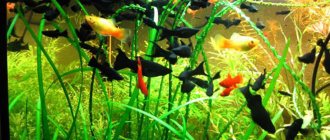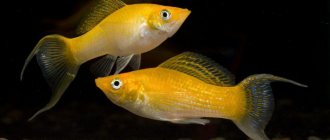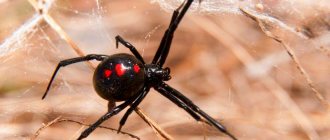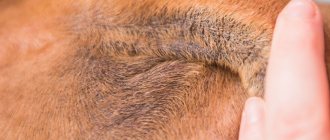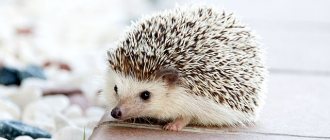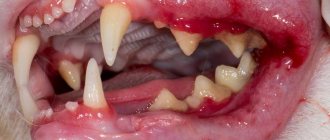For beginners, it is recommended to get fish that do not cause trouble and do not require special care. One of them is Molliesia. It belongs to the group of the Poeciliaceae family.
There is a wide variety of coloring and external features. Fish get along well with other species because their predatory instinct does not work. This article will talk about the varieties, key points of keeping, the difference between a female and a male, as well as obtaining offspring of the Mollies aquarium fish.
Mollies aquarium fish
Molliesia is a viviparous fish from the family Poeciliaceae. Natural habitat: southeastern United States, North American region and South America. Mollies can be seen in the shallow waters of rivers or lakes, in salty bays and on the coasts of the salty sea.
As for external data, Mollies are a beautiful fish. There are many varieties of color: from silver to black. Sometimes there are glimpses of blue and yellowish hues. The body is elongated and slightly flattened laterally. The large mouth cavity allows the fish to feed on crustaceans and plants in its natural environment. The side fins are usually short, and the rear fins are rounded. The eyes are relatively large.
Some species of Mollies reach sizes from 6-20 cm. Females of all species of Mollies are larger than males. Life expectancy in an aquarium is 4-5 years. In the wild, 7-8 years.
The first description of Mollies of the subspecies Sphenops was given by the French zoologist Achille Valenciennes in 1846, when he was preparing material for his 22nd volume “Natural History of Fishes”. Mollies began to be kept in aquariums much later - in 1899, and since then the fish has not lost popularity. Since then, new hybrids have been developed by crossing different individuals. Among them: classic black (sphenops), yellow (latipina), spotted (balloon) and white (Dalmatian).
Table of basic parameters of maintenance, care and nutrition:
| What should be the volume of an aquarium for Mollies? | from 60 liters for 7-10 individuals |
| What should be the temperature in the aquarium for Mollies? | from +23-28 °C |
| What pH should be in the aquarium? | from 7-8.5 pH |
| What should be the hardness of the water in the aquarium? | from 10-35° dH |
| What should be the substrate for an aquarium? | any |
| What kind of lighting should be in the aquarium? | moderate |
| What should be the movement of water in the aquarium? | moderate |
| Maximum fish size | up to 6-20 cm (depending on the type) |
| What does aquarium fish eat? | aquarium plants; dry food; live food: daphnia, tubifex, bloodworms |
| Type of aquarium fish | non-aggressive |
| Who is compatible with in an aquarium? | get along with all non-aggressive fish species |
| Lifespan | up to 5 years in an aquarium |
Feeding
In principle, these are omnivorous aquarium fish. They feed on almost all types of dry and live food. But they also need fiber, which they get from algae. For this reason, it is not advisable to place these fish in an aquarium with artificial vegetation.
The point is that in nature they live in a large number of different algae, this is evidenced by the structure of their jaw and behavior. Therefore, you need to take care of this and purchase non-rigid live vegetation for the aquarium.
Sometimes aquarists throw boiled cucumbers, zucchini or lettuce into the aquarium, but with such additives there is a risk of clouding the water.
Animal food that suits them well is bloodworms, tubifex or brine shrimp.
In fact, these fish have no difficulties in feeding, the main thing is to follow the diet.
Aquarium fish Mollies maintenance and care
Mollies are not a capricious fish, but nevertheless, owners should know the basic rules of care in order to provide it with comfortable living conditions:
- maintain the required temperature conditions. Mollies are heat-loving, so heat the water from +23-28° C. Coolness negatively affects their general condition and health. Install a heater that maintains the temperature. Acidity from 7-8.5 pH. Hardness from 10-35° dH;
- you need to buy a large aquarium of 60 liters for a flock of 7-10 individuals, since molly requires more space, they do not accept crowded conditions. A lid in this case is required, since fish tend to jump out;
- Mollies live in schools of 7-10 fish. They are nimble and fast, they like to cut through spaces in the upper or middle layers of water;
- systematic water replacement will benefit every aquarium inhabitant, and Mollies are no exception. Change aquarium water in a ratio of 30% to 100%. This manipulation will protect the water from the appearance of unwanted nitrogen compounds;
- do not forget about filtration and aeration;
- The aquarium should be illuminated for approximately 12 hours. Therefore, we advise aquarists to fill the area with open areas and artificial lighting;
- the presence of decor is important: caves, stones, aquarium plants (Valeseria, Ludwigia, Elodea, Limnophila, Saggitaria);
- Any soil is suitable;
- Mollies love brackish water. You can add 1 tbsp to the water. a spoonful of salt per 20 liters of water. This procedure is carried out if only molly lives in the aquarium.
Content Features
Mollies are unpretentious fish; even a beginner can keep them. Watching the colorful and nimble company of these creatures will bring pleasure to anyone.
What should an aquarium be like?
Mollies are schooling fish; it is better to buy a small company where females will be in the majority. These fish love to swim freely. A spacious rectangular aquarium would be ideal. For swimming, they choose the middle and upper layers of water, so a round aquarium is also suitable for them. To maintain the purity of the aquatic environment and saturate it with fresh air, a filter and compressor are installed in the mollies’ home.
Water requirements
— Advertising —
Mollies feel comfortable in hard water. It is recommended to add some sodium chloride (rock salt, which is found in every kitchen) to the water, since the ancestors of modern pecelia had to live in salt water. The water temperature in the mollies' home should be at least 24-26 degrees. A sharp change in temperature is detrimental to these small fish, as the risk of fungal diseases increases. A weekly change of 1/5 or 1/3 of the water volume is necessary.
Soil and decor
A flock of mollies usually has a bright color - such a company will look good against the background of dark soil made of sand or fine gravel. A variety of algae are planted in the ground, the bottom is decorated with stone grottoes and driftwood - fish like to hide in thickets and piles of stones.
Mollies what to feed
Molly fry are fed frozen or dry food from well-known manufacturers, which must be crushed before feeding. Frozen food, defrost to room temperature.
Remember that fish are gluttonous, so it is necessary to include vegetarian food in the diet or set aside diet days with minimal food consumption.
The tank must have green spaces: algae with soft leaves, mosses rich in fiber, which the molly can eat on its own. Adults need to be fed once a day, and fry – 2-3 times.
Reference! To enhance the color of fish, feed containing carotenoids is used.
Who do mollies get along with in an aquarium and how to distinguish a female from a male?
Representatives of this species are peaceful and do not conflict with other aquarium fish. They need the same quiet neighbors who will not chase them, much less eat them.
The following are considered good neighbors for molly: Guppies; catfish; Pecilia; Danio and Swordtail. Also, Mollies will not be harmed by Cockerels; Angelfish; Gourami; Labeo; Tetras.
The maturation of Mollies is a rather long process. Puberty in females occurs much earlier - after 6 months, and in males even longer - closer to 10-12 months. The main difference between individuals is the anal fin.
In boys it is represented by the gonopodium. It is cone-shaped, narrow and long. The genital organ of female mollies is rounded in the shape of a triangle. Female mollies are much more massive and larger than males, 10 centimeters long, but this also depends on the species. Another distinctive feature is an active lifestyle.
Reproduction of Mollies in a community aquarium
The ability to create offspring occurs at the age of 8-12 months. For the breeding process in an aquarium, 2-3 females are calculated for each male. Fertilization occurs in a spacious tank, in warm salted water. Since all platies are classified as viviparous fish, fry are born without going through the egg stage. The male immediately fertilizes all the eggs available to the female Molly.
During pregnancy, Mollies get fatter, darkening becomes noticeable on the belly, and the activity of the fish decreases. The female increasingly hides in the greenery away from her neighbors, looking for a secluded corner. Pregnancy lasts about 1.5 months. The female can be placed in another aquarium or in a nursery, which is located in a common aquarium.
One female can give birth to 20-150 fry (depending on the type and size of Mollies).
Reference! Monitor any temperature changes and change the water promptly, otherwise the platies will not be able to reproduce healthy fish or will get sick. The saddest outcome is that the female may give birth to dead fry.
Interesting facts about mollies
- The appearance of mollies fry always occurs at dawn.
- Mollies sometimes experience degeneration, that is, a change in sex. This can happen both at an early age and in adulthood.
- The number of babies is determined by the size of the female. As a rule, a large female produces more offspring. The largest number of fry in one birth is 280 pieces.
- Mollies with a black body color are not a separate species. Instances of this color can appear within any species of these fish.
- There have been cases of white fry from black spawners. This is explained by heredity and connections with previous generations. The white coloration of the fry is not always preserved - sometimes during the 1st month of life, black spots appear on the body of the fish, which become more and more numerous over time.
Mollies species
In the wild, there is a wide variety of Mollies, which differ in color, fin structure and habitat. In our material, special attention is paid to the most popular types:
Aquarium fish Black Mollies (Sphenops or Lyra)
Black mollies live in a variety of Mexican and Colombian waters. The main color is classic black. Brown, greenish and sky-blue tints on black scales are not excluded.
Strong body of oblong shape, slightly flattened on the sides. The eyes are quite large, the head is small. The maximum size of a female black Molly is 8-10 cm, a male is up to 6 cm. You need to keep a black Molly in a flock of 7 to 10 fish in an aquarium of 60 liters or more. Water temperature from +24-27° C, acidity from 7-8 pH, hardness from 10-20° dH.
Note that females in such flocks should predominate so that males do not have fights among themselves. Black Mollies can produce offspring every 30-40 days.
Mollies red/orange aquarium fish
Red mollies are found in fresh water bodies and salt bays, Mexican and Colombian sea coasts. The appearance is represented by a flattened body, slightly elongated.
The red/orange molly is considered a hybrid of some species of Mollies, bred by breeders. A characteristic feature is the fiery red color of this fish. The fins are more transparent with spots.
Males are brighter in color and noticeably smaller than females. The size of the fish varies from 12 to 18 centimeters in length. The main keeping parameters are a spacious aquarium of 100-150 liters with a temperature of +23-26° C, acidity of 7-8.5 pH and hardness of 15-35° dH. The aquarium must have filtration and saturate the water with oxygen using an aerator.
During the mating season, the male opens his high dorsal fin and fertilizes the female. The process of bearing offspring is 6-7 weeks.
Velifera or Velifera mollies
The sailing mollies or Velifera can only be found in shallow waters in central America. The color palette is represented by greenish, blue and silver shades. Possible inclusions of brighter colors.
The dorsal and anal fins are transparent. The size of the dorsal fin is almost equal to the length of the entire body of the velifera; there is a border along the edge of the fin; interestingly, the fin is present only in males.
The body size of females is slightly larger than that of males. The body of the sailing mollies is elongated and tall. The size of the female is from 16-20 cm. The size of the male is from 10-15 cm.
They are considered the most difficult to keep of all subspecies - they are demanding in terms of keeping conditions, do not tolerate temperature changes, are not indifferent to salted water, and require good lighting. Aquarium size from 100 liters. Temperature from +24-27° C. Acidity from 7-8.5 pH. Hardness from 13-20° dH.
Breeding occurs instantly, since Mollies are considered a viviparous species - viable fry are born immediately. Pregnancy lasts 8 weeks, after this time 50-100 fry are born (the number of fry depends on the size and age of the female). The fry should be fed with live food in the form of minced meat: bloodworms, tubifex, brine shrimp.
Silver molly "Snowflake"
Silver mollies "Snowflake" are found only in warm fresh or moderately salty waters of America, Mexico, and Colombia. Molliesia “Snowflake” is considered a hybrid of Mollienesia Velifera, which was subjected to selection work in 1995.
Breeders like it for its snow-white color with a silver, sometimes bluish tint. The lateral, dorsal and rear fins are more transparent. The body is symmetrical in shape, elongated and slightly flattened, the head is medium-sized, and the eyes are large. Males have noticeably high dorsal plumage. The size of the female is 10 cm. The size of the male is 8 cm.
This species is characterized by calmness and friendliness, and gets along with large-sized fish. Lives in a school of 7 fish. The size of the aquarium for this fish should be from 60 liters. Water temperature is from +22-28° C, acidity is from 7-8.5 pH and hardness is from 10-22° dH.
What types of mollies are there?
The genus of mollies is striking in its diversity. Today, about 40 species of these small fish are known, which differ in color. Selection work is constantly being carried out to create new varieties. Here we will look at the most common of them.
Mollies sphenops
Molliesia sphenops (Poecilia sphenops, old name Mollienesia sphenops) has an elongated body, flattened on the sides, with a small head and large eyes. The fins of the fish are small. The tail fin is round. The main color varies. Varieties of silver, yellowish-gray, orange-yellow and black colors have been obtained through selection. The most popular are the Black Mollies Sphenops.
Like all mollies, sphenops is peaceful and active, and feels great in a flock where the majority are females.
Mollies Sailfish
Mollienesia velifera came from the brackish waters of the Yucatan Peninsula. The body of the fish is elongated, dense, flattened on the sides. The color of males is bluish-green, greenish-brown or silver-gray with a whitish or blue sheen. On the sides there are horizontal stripes of many pearlescent specks. The areas of the body in the chest and throat area are orange. The shape of the fin on the back resembles a sail (hence the name), its height is 4.5 cm. The tail fin is round. All fins have a bluish color and a black-orange rim.
Molliesia free
The free mollies (Mollinesia salvatoris) was found for the first time in the waters of Guatemala. It is rarely placed in home aquariums. Representatives of this species are distinguished by bright ventral and dorsal fins (they can be black, white or red).
Unlike other representatives of the genus, soft water without added salt is suitable for free-ranging mollies.
Molliesia latypina
The body of the latipinna molly (Poecilia latipinna Lesueur) is much smaller and more graceful than that of other representatives of the genus. The fins on the back of males have angular outlines, similar to a sail. The fish resembles the described higher molly Valifera, only in reduced size.
Molliesia dwarf
Dwarf mollies (Mollinesia chica) is the smallest of the mollies, the male grows only 3 cm in length, the female up to 4 cm. Suitable for keeping in a community aquarium along with other non-aggressive fish. They feel quite comfortable at temperatures from 17 to 30 degrees (which distinguishes them from other mollies), but are very demanding about the cleanliness of the water space.
Mollies Peten
Mollinesia Peten (Mollinesia petenensis) resembles Valifer's mollies in outline and color, the lower part of the tail is black. Mother-of-pearl spots are scattered across the body and fins, and the tail fin is outlined with a red border.
Based on this species, specimens of a velvety black color were bred, which are in great demand among aquarists.
Mollies diseases: signs, causes, treatment
The sad fact is that Mollies are susceptible to a number of diseases. In most cases, improper care. If you promptly identify the initial signs of inflammatory processes, you can save the life of the fish. Let's take a closer look at the most common of them:
Non-communicable diseases Mollies
- Hypothermia or strong heating of aquarium water. Too high a temperature leads to premature aging of living organisms. Low temperatures provoke the appearance of diseases and even death. Monitor the temperature with a thermometer, which should be in the aquarium;
- Oxygen deficiency. If you notice that fish are greedily gasping for air and swimming only on the surface, immediately buy a more powerful compressor. Otherwise, the molly experiences infertility, suffocation, loss of appetite, and soon they die;
- Chlorine poisoning. An excess of chloride compounds will not benefit Mollies: it is difficult for them to breathe, the color is lighter, restlessness in behavior appears, and there is no reaction. Death comes very quickly. Therefore, regularly monitor chlorine levels;
- Alkali disease. There is a decrease in activity, timidity in all fish, mucus appears on the gills, and the color becomes lighter. You should monitor the level of alkali in the water and avoid changes;
- Obesity. Regular overfeeding threatens to kill the fish. Prevention is a combination of different types of feed in small doses and 2 times a day;
- Gas embolism. Develops when there is an excess of oxygen. The gills of the fish darken and their behavior is extremely restless. Occurs when a large volume of untreated tap water is poured into the aquarium. To improve the condition of Mollies, it is necessary to replace the water with 30% settled water.
Contagious diseases Mollies
- Hexamitosis. Lumps and pits appear on the head. If the outcome is positive, recovered individuals will have traces and scars. For treatment, you should heat the water to +35° C or add metronidazole to the water;
- Fin rot. The fish's fins are deformed, the abdomen may be slightly swollen, and there are ulcers. The infected individual is separated from others, the water is treated with a solution of levomethicin;
- White-skinned. The body color turns completely white, right down to the eyes. It is necessary to disinfect the entire area: transfer the fish to another aquarium and add levomethicin to the water;
- Mycobacteriosis. A practically incurable disease, the so-called tuberculosis in fish. Infected people lose their vision, their bones come out, and ulcers and other growths may appear on their torso. Treatment will only help in the early stages. Minocycline and copper sulfate must be added;
- Ulcer. The causative agent can be either a new fish or just purchased food. Mollies have swollen eyes, loss of appetite, and dark spots that form into ulcers. Immediate treatment with potassium permanganate is necessary.
Invasive Molly Diseases
- Trichodinosis. Young individuals with weak immune systems are susceptible. The fish constantly rub against different surfaces, plaque and mucus appear on the body, and weight decreases too quickly. Treatment is carried out with the addition of table salt and raising the temperature to +31 ° C in a separate aquarium;
- Glucose. With this disease, only death is possible. Molly needs to be disposed of, the aquarium disinfected and the fish reintroduced;
- Ichthyobdosis. Mollies fins stick together, gills change color, and mucus appears on the body. Disinfection is carried out using methylene salt and heating water to +35 ° C in another container.
Thus, by following all the recommendations, you can give a second life to all the inhabitants of the aquarium, including Mollies. And they, in turn, will delight for a long time, give peace and tranquility to their owners.
